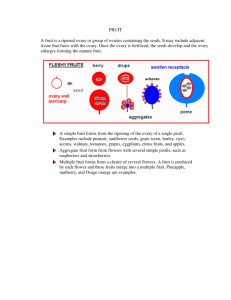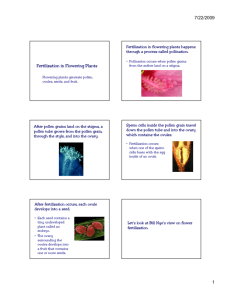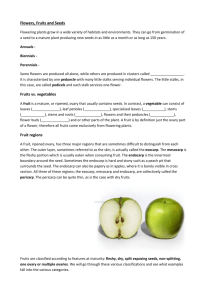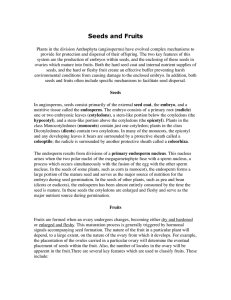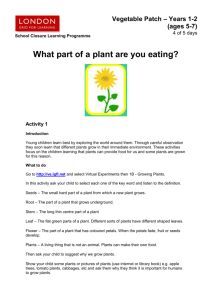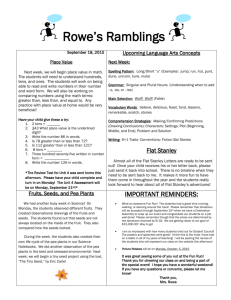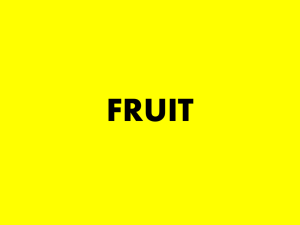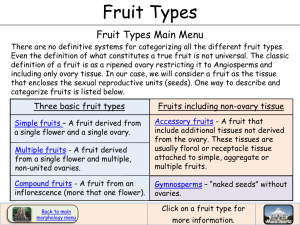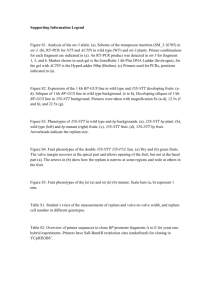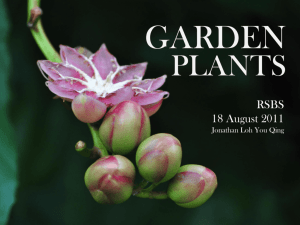NAME - Schools
advertisement
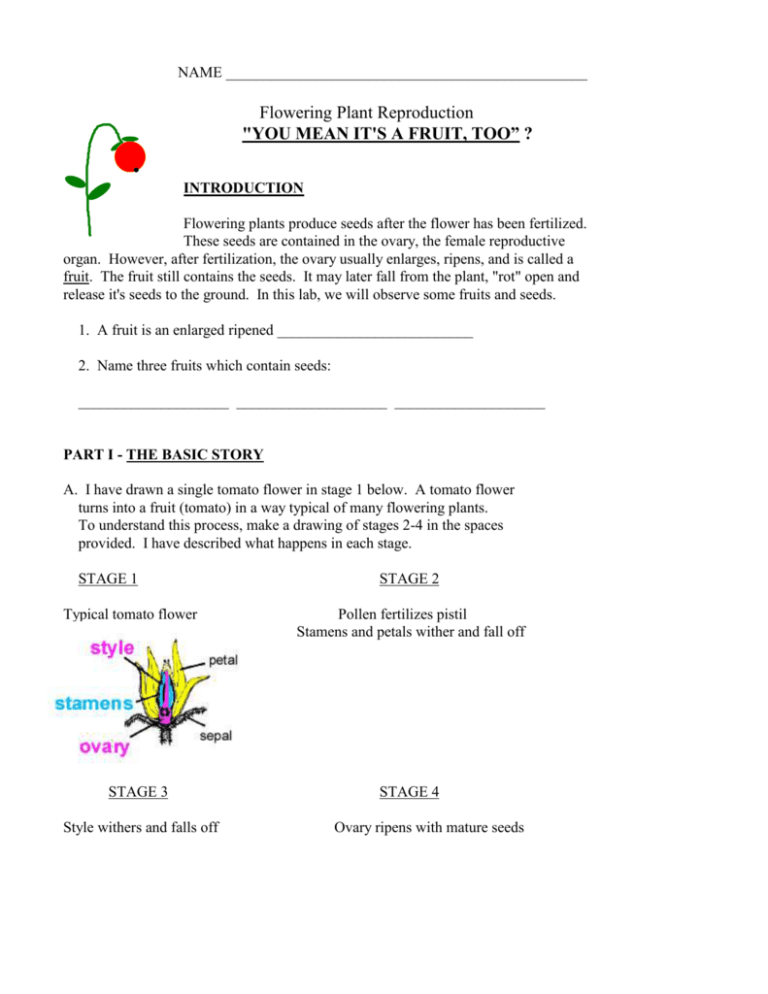
NAME ________________________________________________ Flowering Plant Reproduction "YOU MEAN IT'S A FRUIT, TOO” ? INTRODUCTION Flowering plants produce seeds after the flower has been fertilized. These seeds are contained in the ovary, the female reproductive organ. However, after fertilization, the ovary usually enlarges, ripens, and is called a fruit. The fruit still contains the seeds. It may later fall from the plant, "rot" open and release it's seeds to the ground. In this lab, we will observe some fruits and seeds. 1. A fruit is an enlarged ripened __________________________ 2. Name three fruits which contain seeds: ____________________ ____________________ ____________________ PART I - THE BASIC STORY A. I have drawn a single tomato flower in stage 1 below. A tomato flower turns into a fruit (tomato) in a way typical of many flowering plants. To understand this process, make a drawing of stages 2-4 in the spaces provided. I have described what happens in each stage. STAGE 1 Typical tomato flower STAGE 3 Style withers and falls off STAGE 2 Pollen fertilizes pistil Stamens and petals wither and fall off STAGE 4 Ovary ripens with mature seeds B. Next, select a ripened tomato ovary from the lab table. Find where the stem is/was attached. Are there any sepals still attached? __________ Find where the style withered away at the opposite end. Now, using a razor blade, slice across the middle of the ovary and remove the top half. (Note: This may already have been done by a previous lab group.) 3. How many compartments are there? ____________________ 4. How many seeds can you see? _________________________ PART II - FRUITS AND MORE FRUITS When we think of fruits, we think of apples, oranges, grapes, etc.. Those are all fruits, but so are other "vegetables". To a biologist, a fruit is a ripened ovary from a flowering plant. So not only are watermelon and pineapples fruits, but so are pumpkins and ears of corn. They are all ripened ovaries containing seeds. 5. A ripened ovary is called a _____________________________ 6. The ovary is the female reproductive organ of a _____________________ Move to the FRUIT DEMONSTRATION TABLE. Most of the "veggies" assembled here are fruits. Study each one to see if each has: a. a stem or attachment point for the stem b. sepals or attachment point for the sepals c. an attachment point for the withered style d. an outer ovary covering (fruit) e. seeds Compare each “veggie” to the typical fruit pictured below. Then fill in the chart on the next page. Remember, some parts may have fallen off so all you will see is the attachment point. Typical Fruit Parts (Cut open) Stem Sepals Ovary covering Withered style Seeds In the following chart, list each "veggie" by name and put a check mark in the space for each fruit part it has. __________________________________________________________________ "VEGGIE" NAME Stem Sepals Withered Ovary Seeds Style Covering __________________________________________________________________ __________________________________________________________________ __________________________________________________________________ __________________________________________________________________ __________________________________________________________________ __________________________________________________________________ __________________________________________________________________ __________________________________________________________________ __________________________________________________________________ __________________________________________________________________ __________________________________________________________________ 7. List the "veggies" that are true fruits. To be a true fruit it has to have a check in each box- _________________________________________________________ __________________________________________________________________ __________________________________________________________________ 8. List any "veggies" that are not fruits(missing at least one checkmark)____________ __________________________________________________________________ 9. Which fruits have only one seed? ________________________
